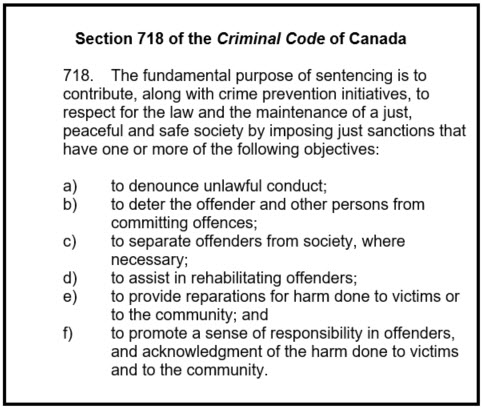In medieval times, sentences for crimes in England could include whipping, hanging, burning at the stake, or being drawn through city streets and decapitated. These sentences were, by intent, gruesome public spectacles. The community’s role was to watch and be deterred from committing crimes.

Members of the public were sometimes encouraged to participate actively in the punishment - for example, by throwing garbage and rotten food at an offender sentenced to the pillory.
Grim reminders were devised for people who couldn’t attend the grisly spectacles, including, up until the late 1600’s, displaying offenders’ body parts on spikes on London Bridge.
However, public objections to these spectacles eventually led to change. In a presentation before the Royal Commission on Capital Punishment 1864-1866 (England) Home Secretary Spencer Horatio Walpole said executions had become so demoralizing that they were brutalizing the public mind instead of having a positive effect and deterring people from crime. Public executions ended in England in 1868.
Sentencing today
Fast forward to the present day, when our elected members of Parliament have stated in section 718 of the Criminal Code of Canada that the fundamental purpose of sentencing is to protect society and to contribute to respect for the law and the maintainence of a just, peaceful and safe society.

In addition to denouncing and deterring unlawful conduct, Canada’s Criminal Code identifies rehabilitation, not retribution, as the means to achieve and maintain a just, peaceful and safe society. The sentencing objectives set out in the Code strive to ensure sentences are proportionate to the seriousness of the offence and the responsibility of the offender.
Some offenders coming before our criminal courts have underlying issues – for example, alcohol or drug addiction, a mental health problem, or a cognitive condition such as fetal alcohol spectrum disorder - that can impede their participation in society. If these issues are not addressed or individuals do not receive the assistance they need to remove or manage barriers they struggle with, some may repeat their criminal behaviour.
It takes a community
You may be surprised to learn the extent to which communities, many through non-profit societies run by volunteers, contribute to the goal of maintaining a just, peaceful and safe society in Canada today. These non-profit societies offer programs and assistance to help people overcome the barriers they struggle with. In this way, our communities provide an invaluable service contributing to the maintenance of a just, peaceful and safe society.
These non-government organizations range from large, well established societies with multiple programs, to small community groups focused on resolving more narrow or local issues. Just a few examples are:
• John Howard Society, whose stated goals for their BC operations include re-integrating people exiting the criminal justice system back into the community, addressing the overrepresentation of people with mental health challenges and developmental disabilities in the criminal justice system, improving coordination between agencies that support vulnerable people, and increasing the amount of adequate supportive housing.
• North Shore Restorative Justice Society, whose mission is to build capacity and connectivity with the lower mainland’s North Shore community to prevent and respond to conflict and harm. The Society does this through “values-based processes that engage elders, adults and youth”.
• Ruth and Naomi’s Mission, who self-describe as not being a charity that simply meets people’s needs but a supportive network of caring professional staff and energized volunteers who daily engage with those experiencing poverty, homelessness, and addiction and join with these friends on a journey of self-discovery and personal transformation.
• Circle of Eagles Lodge Society, (COELS) whose mission is to support Indigenous Brothers and Sisters leaving federal institutions and those dislocated from society to reintegrate into Community by providing respectful holistic services and culturally safe spaces.

In most medium-sized BC communities you’ll find a mosaic of services helping people address the underlying issues that may bring them into contact with the criminal justice system. In Kelowna, for example, existing services include, but are not limited to, the John Howard Society, Freedom’s Door, NOW Canada, Karis Support Society, Elizabeth Fry Society, Ki-Low-Na Friendship Society, and the Gospel Mission.
The groups in BC communities that have either the goal, or the indirect effect, of preventing initial or repeat contact with the criminal justice system are far too numerous to list. However, the 2019 Annual Report of the Law Foundation of BC lists funded programs and projects, providing an excellent sample of the array of organizations and services that exist. (The Law Foundation of BC is a nonprofit foundation created by legislation to receive and distribute the interest on clients’ funds held in lawyers’ pooled trust accounts. The Foundation’s mission statement is to advance and promote a just society governed by the rule of law, through leadership, innovation, and collaboration.)
Probation and conditional sentence orders imposed by judges may integrate available community services and programs with government Community Corrections supervision and programs, and BC’s Community Corrections probation officers often work closely with community organizations.
Today, many British Columbians contribute to maintaining a just, peaceful and safe society by volunteering with groups like these in their communities.

